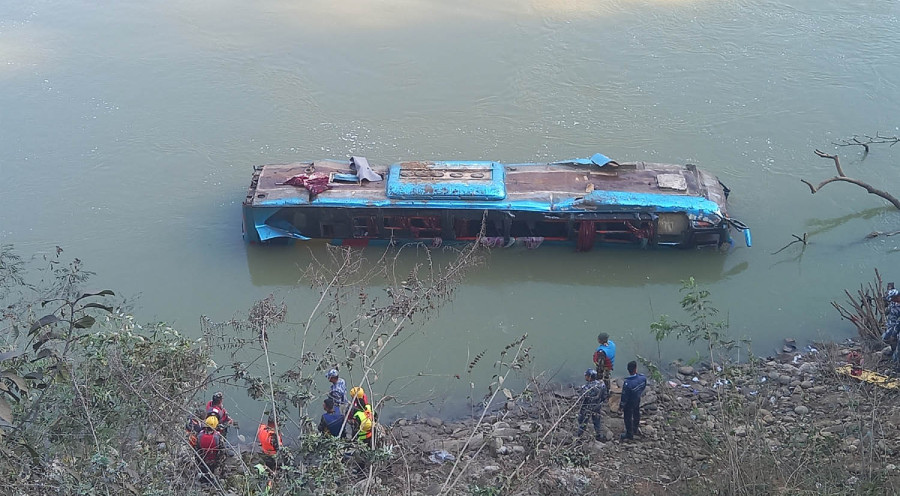Editorial
On the wrong track
Little is being done to stop the vicious cycle of deaths and injuries on our roads.
On Wednesday, amid the cacophony of which party or which politician took which ministry in the newly formed government, it was as if no one heard the news of a passenger bus plunging into the River Trishuli, in Gajuri, killing seven persons and injuring over 30. The devastating news made the headlines on several news websites in Nepal in the morning, but it was soon replaced by the goings-on in the political scene. Even the online portals that often narrated individual stories of victims earlier in such accidents seemed to have set different priorities on Wednesday. This invisibilisation of the loss of lives and limbs is as much a reflection of Nepali media’s priority today as much as it is a peek into the debased form of the country’s social and political discourses.
The formalities were fulfilled, of course. As usual, Prime Minister Pushpa Kamal Dahal, on X, or ex-Twitter, expressed grief over the deaths, wished a speedy recovery for the injured, and ordered the concerned agencies to expedite the rescue process. The prime minister fell just short of announcing relief for the dead and the injured, which the government will do in due course. After all, the new Minister for Physical Infrastructure and Transport, Raghubir Mahaseth, is right now busy receiving congratulatory messages for his new appointment.
But that’s where it all ends: The media has a different story to chase; the prime minister has a sulking ex-coalition partner to placate; the people have a more urgent problem to complain about. It will be the talk of the town for a few weeks if it is an air crash; under a week if it is a major bus accident; a couple of days if it is a car accident; and hardly anyone bats an eye if it is a motorbike or bicycle accident even if it involves death. It is only in the immediate family that the agony brought about by the accidents leaves a permanent mark. For others, it is life as usual.
If it weren’t, there would have been concerted efforts at stopping the vicious cycle of deaths and injuries on the road. Barely seven months have passed since a bus plunged into a river in Bara District, killing seven persons and killing forty. Hardly a month and a half have passed since a passenger bus plunged into the River Rapti, in Dang District, killing 12 persons and injuring twenty-four. And it’s not even three weeks since a bus veered off the road in Kapilvastu District, killing ten persons and injuring thirty. These are just a few cases that highlight the cycle of vehicular accidents in Nepal. Embarking on a long-route bus journey in Nepal has essentially become a walk in a minefield; you never know when and where a live mine blows you off.
We are all complicit in this cycle: The government that fails to build safer roads and enforce traffic rules; the drivers that don’t understand the need to care for the safety of their passengers; the media that turns its focus off people’s concerns too fast; and the public that fails to make the noise where it is needed the most. We must speak up, for road accidents have become a silent epidemic in Nepal.




 17.12°C Kathmandu
17.12°C Kathmandu














